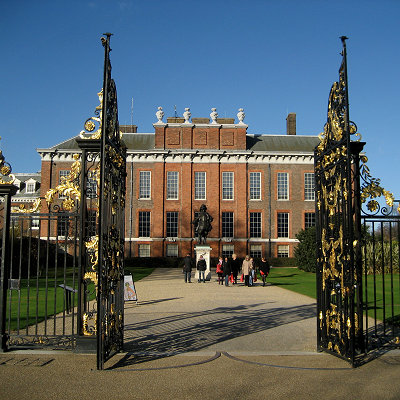
Like us on Facebook
PLACE NAMES


 
|
|
Kensington
|

| |
Kensington is an affluent district within the Royal Borough of Kensington and Chelsea in West London. The north east is taken up by Kensington Gardens, once private, as the name suggests, but today a public park with Italian and Dutch gardens, public buildings such as the Albert Memorial, the Serpentine Gallery and Speke's monument.
Its commercial heart is Kensington High Street. The affluent and densely populated area contains the major museum district of South Kensington, which has the Royal Albert Hall for music and nearby Royal College of Music. The area is home to many of London's European embassies. Cementing Kensington's indicators of connections with France, the area has the Lycée Français Charles de Gaulle, French Consulate, French Embassy Cultural Department and the London Oratory.
The first mention of the area is in the Domesday Book of 1086, where it was written in Latin as "Chenesitone", which has been interpreted to have originally been "Kenesignetun" (Kenesigne's land or meadows) in Anglo-Saxon. A variation may be Kesyngton, in 1396.
The manor of Kensington, Middlesex, was granted by William I to Geoffrey de Montbray or Mowbray, bishop of Coutances, one of his inner circle of advisors and one of the wealthiest men in post-Conquest England. He in turn granted the tenancy of Kensington to his vassal Aubrey de Vere I, who was holding the manor in 1086, according to Domesday Book. The bishop's heir, Robert de Mowbray, rebelled against William Rufus and his vast barony was declared forfeit. Aubrey de Vere I had his tenure converted to a tenancy in-chief, holding Kensington after 1095 directly of the crown. He granted land and church there to Abingdon Abbey at the deathbed request of his young eldest son, Geoffrey. As the Veres became the earls of Oxford, their estate at Kensington came to be known as Earls Court, while the Abingdon lands were called Abbots Kensington and the church St Mary Abbots.
The original Kensington Barracks, built at Kensington Gate in the late 18th century, were demolished in 1858 and new barracks were built in Kensington Church Street.
Notable attractions and institutions in Kensington (or South Kensington) include: Kensington Palace in Kensington Gardens, the Royal Albert Hall opposite the Albert Memorial in Hyde Park, the Royal College of Music, the Natural History Museum, the Science Museum, the Victoria and Albert Museum, Heythrop College, Imperial College, London, the Royal College of Art and Kensington and Chelsea College. The Olympia exhibition hall is just over the western border in West Kensington.
|
 Feel free to Email me any additions or corrections Feel free to Email me any additions or corrections
LINKS AVAILABLE TO YOUR SITE
| |





